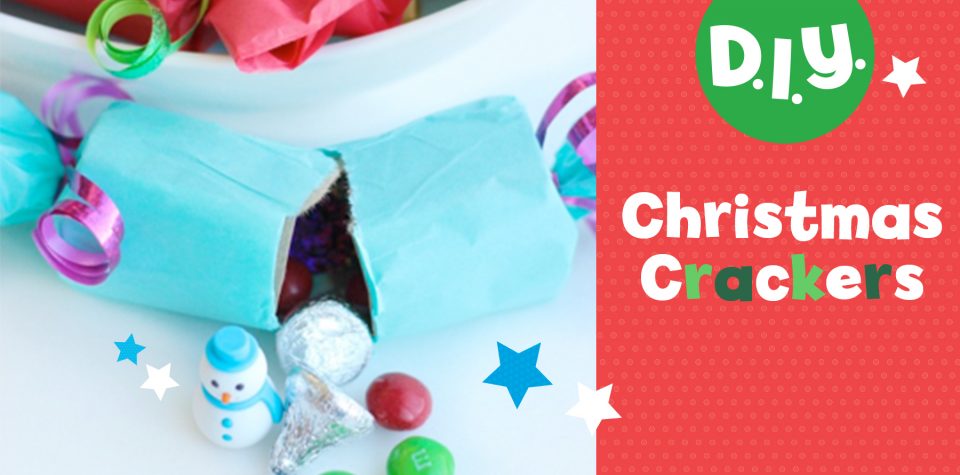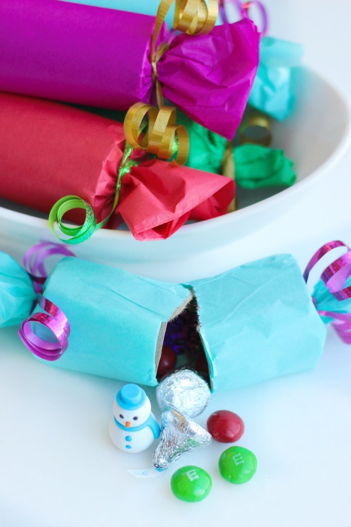
Make Your Own Christmas Crackers
The tradition of the Christmas cracker hails from the United Kingdom. They were made in the 1800s by an English candy maker who wanted to give his sweets a special crackle and pop! Inspired by the crackling of his winter fire, he came up with the fun treat we now know as Christmas crackers. During Christmas dinner, English families all wear silly paper crowns and break open their crackers – which is pretty fun, considering that the English are famous for being reserved!
It’s easy to make your own Christmas crackers with just a few supplies from home. You can fill your crackers with whatever you’d like. We made these for New Year’s Eve one year, one for each hour leading up to midnight. Each cracker had a slip of paper with an activity to do that hour. It was so much fun!
Supplies to Make Christmas Crackers
- Toilet paper rolls
- Scissors
- Tissue paper
- Tape
- Candy
- Small toys
- Curling ribbon

How to Make Christmas Crackers
Step 1: Make a slit in the center of the toilet paper roll. This makes it easier to crack open later.

Step 2: Cut two pieces of tissue paper, a few inches wider than the roll and about 12” in length. Roll up, leaving the ends open.

Step 3: Tie off one end with curling ribbon. Fill with toys and candy from the other side, then close off with curling ribbon.

Step 4: To crack open, simply apply pressure to the center with your thumbs and pull apart!

If your child loves hands-on crafts and activities, be sure to check out our Early Explorers (ages 3-5) and World Edition (ages 6-10) subscriptions for more fantastic and engaging projects! Shop here.
